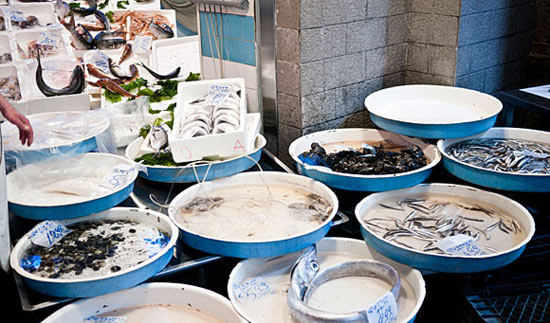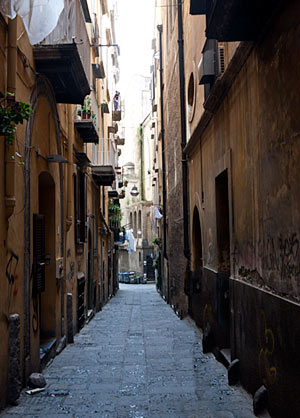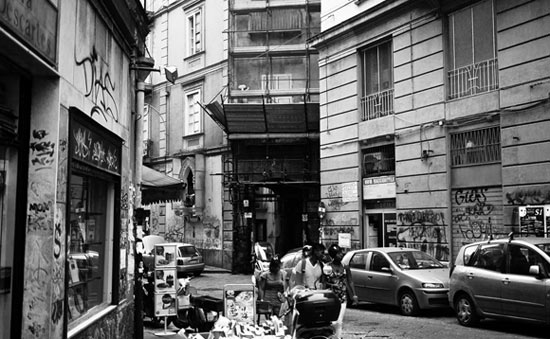The New Pollution
Naples is a big, crowded, graffiti-filled city. It’s an intimidating place that is by turns a bit like Philadelphia, a bit Mumbai, a bit some post-apocalyptic video game and, in the end, something else entirely.
The rest of the world abandoned Naples long ago, left it to find its own way, fumbling through some darkness of its own making toward a light it can’t yet see.
The old Centro Storico area is a maze of narrow stone streets swarming with scooters dodging shoppers at the morning markets where fresh fruit and dried pasta hang alongside lanterns and trinkets, fishmongers crowd the sidewalks and the smell of pastries and coffee choke the air.

The sun rarely makes it down through the five and six story facades to the streets below. The shadowy world of dark granite streets gives the impression that you’re strolling through canyons of carefully cut stone blocks and marble doorways. There are no trees down here, hardly any plants at all. Higher up,, on the second and third stories, a few ferns, some moss and grasses grow on the balconies of abandoned buildings.
 Even if there were light, there’s no room for trees. There’s hardly any room to move, save when a street opens up into a piazza, where in the evening crowds gather to drink beer or wine, or perhaps to eat in the restaurants that line the edges of the larger squares.
Even if there were light, there’s no room for trees. There’s hardly any room to move, save when a street opens up into a piazza, where in the evening crowds gather to drink beer or wine, or perhaps to eat in the restaurants that line the edges of the larger squares.
Naples is it’s own world. I sit outside the hotel watching as people on a balcony down the street lower a bucket down from the fifth story with a few euro inside. The man at the nearby tabac runs over, retrieves the euro and throws a pack of cigarettes inside. The bucket retreats back up into the heights of the buildings, disappearing into a tiny sliver of night sky. Naples, the city time forgot.
Naples is not tourist friendly, it’s not even pretty. It’s just a city. Most of it is covered in graffiti, and, thanks to strikes and general city mismanagement (read: mob control), garbage. Or at least the city proper is, the old town area is largely trash-free, if only because the streets are so narrow there’s simply no room for any trash. The graffiti though is universal, perhaps the one thing that links the old town and the newer portions together.

Pompeii, just thirty minutes away and 2600 years older, was also once covered in ancient Roman graffiti. It’s just how they do things here apparently, it’s in the blood, in the soil, in the wind. Speak your mind with spray cans — or whatever might be the tool of the era — out in the open, for everyone to see.
The main reason any tourist, myself included, comes to Naples is its proximity to Pompeii. Beyond the quick and cheap train out to Pompeii, Naples doesn’t have a lot to offer. That’s part of it’s appeal. Perhaps best appreciated in hindsight, but appeal nonetheless. Still, given the tourist epidemic that sweeps Italy every summer, Naples is a place worth appreciating for what it is not, even if what is isn’t, perhaps, enough to ever bring you back.